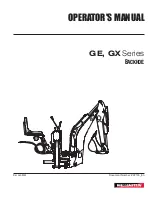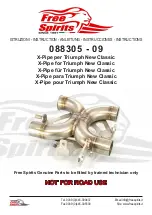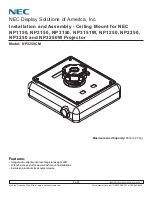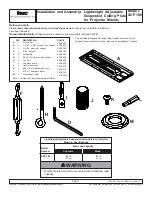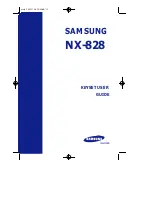
Safety
Safety
10
GE, GX Series
Backhoe
2.5.1 Safe Condition
Throughout this manual, we talk about a '
Safe Condition
'. What
this means is parking the machine in a manner that makes it
safe to service or repair.
Place the machine in a Safe Condition before performing
any service, maintenance work or storage preparation by
performing the following:
Safe Condition
•
Install boom and swing lock pins, or rest bucket on
ground.
•
Shut off hydraulic system.
•
Set parking brake and shut off engine. Remove ignition
key.
•
Ensure all components have stopped moving.
•
Block or chock wheels.
2.6 Maintenance Safety
•
Have at least two workers present when performing
maintenance on this equipment. Never work alone in case
an emergency should arise.
•
Keep service area clean and dry.
•
Never operate the engine in a closed building. Make sure
there is plenty of ventilation. Exhaust fumes can cause
asphyxiation.
•
Never work under unsupported equipment.
•
Use only genuine OEM replacement parts. The
manufacturer is not responsible for injuries or damage
caused by the use of non-approved parts or accessories.
•
Make sure all safety shields and devices are re-installed
when a maintenance or service procedure is finished.
•
Do not use gasoline or diesel fuel when cleaning any parts.
Use a regular cleanser.
•
Use proper tools that are in good condition. Make sure the
procedure is understood before performing any service
work.
2.6.1 Hydraulic System Safety
•
Make sure that all the components in the hydraulic system
are kept clean and in good condition.
•
Make sure all components are tight, and that lines, hoses
and couplings are not damaged before applying pressure to
the system.
•
Do not use your hand to check for
hydraulic oil leaks. Hydraulic fluid
escaping under pressure can penetrate
the skin causing serious injury. Use a
piece of cardboard instead.
•
Wear proper hand and eye protection
when searching for a high-pressure
hydraulic leak.
•
Seek medical attention immediately if injured by a
concentrated high-pressure stream of hydraulic fluid.
Serious infection or toxic reaction can develop from
hydraulic fluid piercing the skin surface.
•
Do not attempt any makeshift repairs to the hydraulic lines,
fittings or hoses by using tape, clamps or cements. Doing
so can cause sudden failure and create a hazardous and
unsafe condition.
•
Relieve pressure on the hydraulic system before working
it. The hydraulic system operates under extremely high
pressure.
•
Replace any hydraulic hose immediately that shows signs
of swelling, wear, leaks, or damage before it bursts.
•
Do not bend or strike high-pressure lines, tubes or hoses,
or reinstall them in a bent or damaged condition.
•
Check to make sure hydraulic hoses are not worn or
damaged, and are routed to avoid chafing.
•
Never adjust a pressure relief valve or other pressure-
limiting device to a higher pressure than specified.

